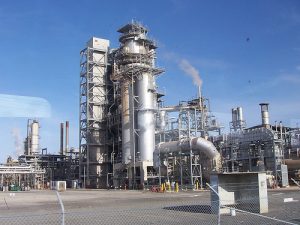Oil Supply and Demand-
Oil Demand Down
Crude oil demand in the United States is down to its lowest level since the onset of the global economic recession. A lackluster economic recovery, coupled with cautious consumer sentiment, is keeping demand for petroleum products suppressed. Nevertheless, lingering concerns over geopolitical tensions with Iran has prompted some governments to raise the possibility of releasing strategic petroleum reserves. Fundamentally, it seems, markets are well supplied, though it may be emotional factors driving certain aspects of the energy market.
The American Petroleum Institute, in its report for July, finds that crude oil demand is down to its lowest levels in roughly four years.U.S. petroleum deliveries for July declined to around 18 million barrels per day, the lowest level for the month since 1995 and the lowest overall since the onset of the global economic recession in 2008.
Oil Supply Up

John Felmy, the API’s chief economist, said lower consumer demand was in large part a reflection of the lackluster U.S. economic recovery and lingering pessimism in the eurozone.
“While retail sales for July are up and housing has improved, the weak petroleum demand numbers are a strong indication the economy is still faltering,” he said.Oil for September delivery retreated 0.1 percent Monday to $95.88 on the New York Mercantile Exchange, ending four days of advances. Outside of the United States, the Joint Organization Data Initiative reports that crude oil production from Saudi Arabia in June reached its highest level in more than 30 years.
Forget Supply and Demand- Politicians to the Rescue
Crude oil futures began declining last week on talk by some Western governments of a possible release of strategic petroleum reserves. White House spokesman Josh Earnest confirmed that a release from SPR “is an option that is on the table” in Washington.
The last time governments tapped into their strategic reserves in 2011, Libyan oil production was shuttered by civil war. When oil prices hovered about $100 per barrel early this year, however, most of the market was concerned by tensions with Iran more than a physical disruption, as was the case last year.
API said much of the decline in oil demand was because of lower gasoline usage in the United States. Refinery closures in California and the U.S. Midwest, coupled with a July oil spill in Wisconsin, pushed retail gasoline prices above the $4 per gallon mark. Consumers react strongly to that benchmark, but with fuel efficiency improving, it may be more of an emotional reaction despite lingering unemployment and personal financial concerns. Energy markets, said one analyst, are responding to “just about everything except oil news right now.” Nevertheless, with the Election approaching, political maneuvering may be more of a reflection of public sentiment than a legitimate concern about physical shortages in the energy market.

My guess would be that keeping gas prices down and the stock market up are very high priorities for the White House for the next few months until the election. And if that requires the FED printing more money or the Government releasing strategic oil reserves I’m sure that will be done… even if we don’t need the oil and the end result of printing money is higher inflation.
See Also:
- Why Facebook Works, and Democracy Does Not
- Unintended Consequences of Well-Intended Policies
- Will Bernanke Save the Equity Markets?
- How to Save Your Money And Your Life
- Gold vs Oil Chart
- Oil Prices- Where Now?
- Oil Prices < $40/Barrel?
- Scotland Leader in Renewable Energy?
- Bad News for Pipelines – Good News for Rail
Source: Daniel J. Graeber of Oilprice.com Photo Credits: by azza-bazoo Oil refinery
